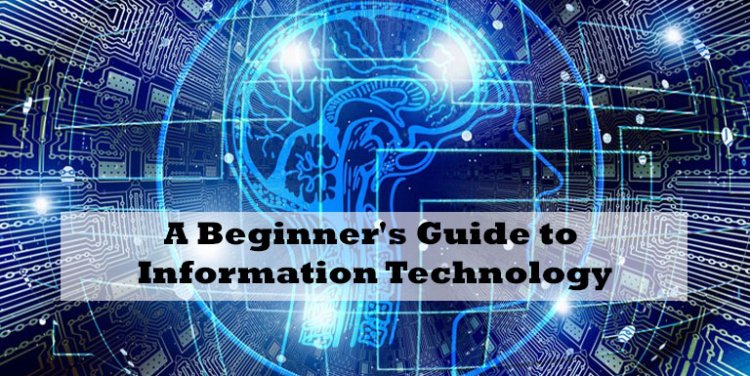In a world where technology plays an ever-increasing role in our daily lives, understanding the fundamentals of Information Technology (IT) is more important than ever. IT is the backbone of our digital world, shaping the way we work, communicate, and access information. Whether you're a novice or just looking to brush up on the basics, this beginner's guide to IT will help demystify the world of technology and set you on a path to digital literacy.
What is Information Technology?
Information Technology, often abbreviated as IT, is a broad field that encompasses the use of computers, software, networks, and electronic systems to manage and process information. It's about leveraging technology to store, retrieve, transmit, and manipulate data in various forms. Information Technology is everywhere, from the smartphones in our pockets to the cloud services that power our online activities.
The Core Components of IT
To grasp the essence of IT, it's crucial to understand its core components:
-
Hardware: Hardware refers to the physical components of a computer or electronic device. This includes items like laptops, servers, routers, and smartphones.
-
Software: Software consists of programs, applications, and operating systems that enable hardware to perform specific tasks. For example, Microsoft Windows is an operating system, and Microsoft Word is a software application.
-
Networks: Networks connect devices, allowing them to communicate and share information. The internet is the most extensive network, but smaller networks exist within homes, offices, and data centers.
-
Data: Data is at the heart of IT. It includes text, images, videos, and other forms of information that computers and systems process and store.
Key IT Concepts for Beginners
1. Operating Systems
An operating system is software that manages hardware and software resources, providing a platform for computer programs to run. Common examples include Microsoft Windows, macOS, and Linux.
2. The Cloud
The cloud refers to remote servers and data centers that store and manage data and applications. Cloud services offer scalable and cost-effective solutions for businesses and individuals.
3. Cybersecurity
Cybersecurity focuses on protecting computer systems, networks, and data from theft, damage, or unauthorized access. It's essential in a world where digital threats are prevalent.
4. Coding and Programming
Coding is the process of writing instructions in a programming language to create software applications. Learning to code is a valuable skill in IT.
5. Networking
Understanding networking basics, like IP addresses, routers, and Wi-Fi, is crucial for connecting devices and accessing the internet.
Benefits of IT Literacy
Becoming IT literate offers numerous benefits:
-
Improved job opportunities: Many careers require IT skills, and being IT literate can make you a more attractive job candidate.
-
Enhanced productivity: IT tools and software can streamline tasks, making work and daily life more efficient.
-
Digital communication: IT literacy enables effective communication through email, social media, and other digital channels.
-
Problem-solving: Understanding technology empowers you to troubleshoot and solve common IT issues.
Embracing Information Technology is a journey that opens doors to a world of opportunities and possibilities. As a beginner, gaining a solid grasp of IT fundamentals sets the stage for further exploration and learning. With the rapid pace of technological advancement, the world of IT is continually evolving, offering exciting avenues for those who embark on this digital voyage. Whether you're seeking to excel in your career or simply looking to better understand the tech-driven world around you, the journey into Information Technology begins with a single step, and this beginner's guide is your first stride forward.







